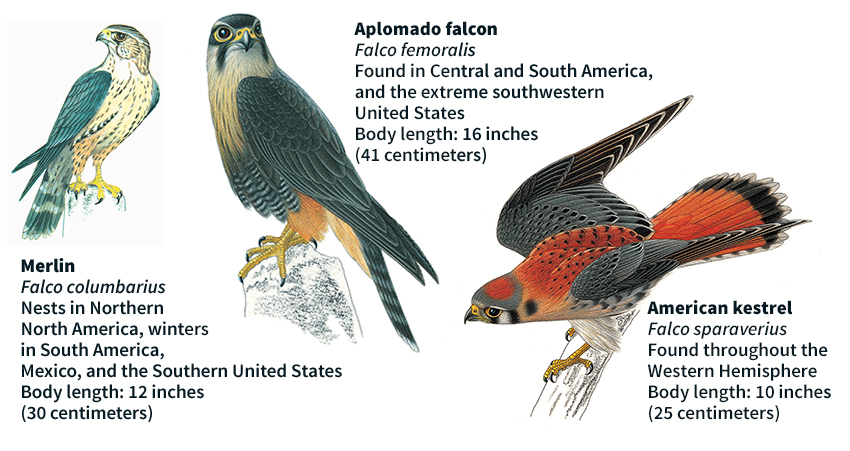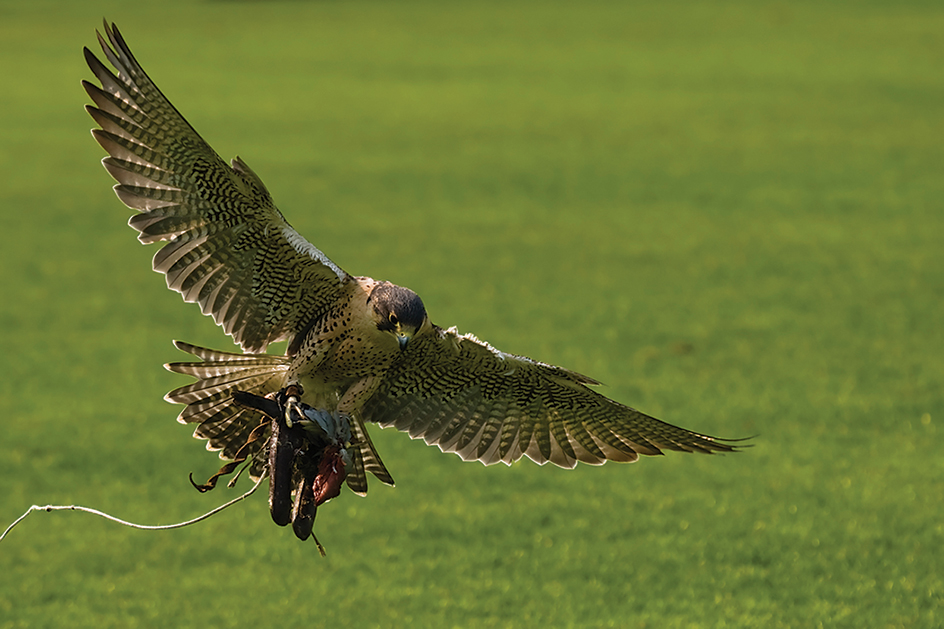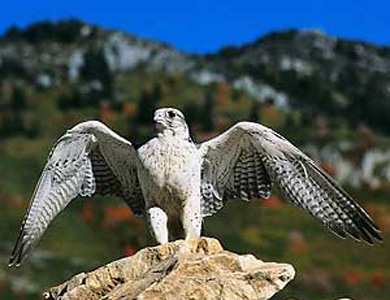Falcon is a kind of small bird of prey. Falcons are found in a variety of habitats throughout the world. They live in grasslands, forests, deserts, and Arctic tundras, and along seacoasts. Falcons probably first appeared thousands of years ago in the grasslands of Africa. There are dozens of species (kinds), about half of them found in Africa. The best-known North American species include the American kestrel, the peregrine falcon, and the gyrfalcon.

Like hawks, falcons have a hooked beak and powerful feet with strong claws. Falcons differ from hawks in having dark eyes; long, pointed wings that curve back in a sickle shape; and beaks that have a “tooth” on each side. Most falcons measure from 8 to 24 inches (20 to 60 centimeters) long. Females are larger than males.
Falcons are exceptionally powerful fliers. They often make spectacular stoops (steep descents) from great heights to capture prey. They use their feet to either grasp or strike at their prey. Unlike hawks, falcons kill the prey with a powerful bite to the head or neck. Hawks normally kill prey with their claws.
Falcons do not build nests. Females lay their eggs on the ground, on rocky ledges, in abandoned nests, or in holes in trees, cliffs, or even buildings. They usually lay three to five eggs that are buff or whitish in color and heavily marked with brown, red, or purple spots or blotches. In most species, the female incubates (sits on and warms) the eggs, with regular help from the male. Most falcon eggs require about 30 days of incubation. For the first few weeks after the young have hatched, the male provides nearly all the food. Many falcons die during the first year of life. The falcons that survive the first year typically live for 10 years or more.
The American kestrel
is the smallest and most common North American falcon. The adult measures about 8 inches (20 centimeters) long. American kestrels range from Alaska through South America. They live in grasslands, woodlands, and even cities. The male has a reddish-brown back and tail and grayish-blue wings. The wings of the female are brown.
American kestrels prey on insects, lizards, and mice, and on other birds. They typically hunt their prey from perches. But on windy days, they may hover (stay in one place) in the air while hunting. In some areas, American kestrels migrate south for the winter.
The peregrine falcon
is one of nature’s flying marvels. It can stoop for prey at a speed of over 200 miles (320 kilometers) per hour. This falcon measures up to 20 inches (50 centimeters) long. It is dark blue or bluish-gray above and has white to reddish underparts marked with blackish-brown bars. Peregrine falcons live along cliffs near seacoasts, rivers, and lakes, or in the mountains. They once were found throughout most of the world but are now rare or absent in many areas. Scientists have reintroduced them into many present and former habitats, including a number of large cities. These falcons feed chiefly on other birds. In North America, the peregrine falcon is sometimes called duck hawk.

The gyrfalcon
is the largest species of falcon. The gyrfalcon grows to a length of 2 feet (60 centimeters). It lives in Arctic regions of North America, Europe, and Asia. Most gyrfalcons have white or gray coloring.

Other North American falcons
include the merlin, the prairie falcon, and the Aplomado falcon. The merlin lives in open woodlands and other open areas, and along coastal areas, of northern North America. It migrates to the southern United States, Mexico, and South America for the winter. The prairie falcon inhabits deserts or dry grasslands in western North America. The Aplomado falcon is found in high deserts and tropical lowlands. Its range extends from South America north to the extreme southwestern United States, where it is extremely rare.
See also Bird (How birds see); Falconry; Hawk; Kestrel; Peregrine falcon.
